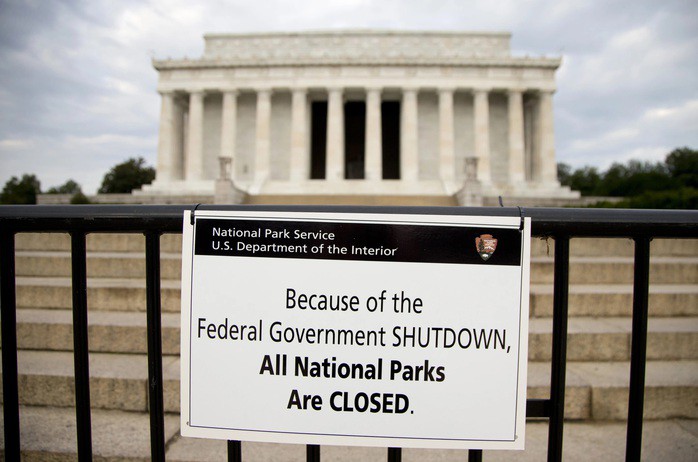HOT: The US government officially shut down, what will happen?
The US government officially shut down at midnight on October 1 (local time, 11:00 Vietnam time), after Congress failed to reach a budget agreement.
This has happened many times in the past, but the impact of this shutdown on federal employees could be more severe.
Budget battle
Until the US Congress acts, a range of federal services could be suspended or disrupted as some agencies stop all non-essential functions.

The threat of a government shutdown has become a feature of recent budget battles in the US Congress amid deep political divisions, according to the Guardian.
A standoff in 2018, during President Donald Trump's first term, led to a 34-day government shutdown. During that time, about 800,000 of the 2.1 million federal employees were furloughed.
The previous shutdown lasted from October 1 to 17, 2013, under President Barack Obama.
Why could this shutdown be the worst?
Commentators say the impact on federal workers in the US during this shutdown could be even more severe.
Donald Trump has threatened to lay off federal workers en masse if the government shuts down.
In a memo released last week, the White House Office of Management and Budget (OMB) told agencies to prepare not only for furloughs but also for layoffs in the event of a government shutdown.
Government workers in the US have already been hit hard by the Trump administration's aggressive cuts.
At a press conference last week, House Minority Leader Hakeem Jeffries said Democrats "will not be deterred" by the threat of further federal layoffs.
What happens after a government shutdown?
After the US government shut down - either in whole or in part - on October 1, about 750,000 federal employees were furloughed, according to estimates from the US Congressional Budget Office.
Activities deemed essential—like Social Security, military missions, immigration enforcement, air traffic control, the post office—will continue, but other services could be disrupted or delayed.
Agencies have released constantly updated contingency plans in the event of a government shutdown.
The U.S. Department of Education said nearly all employees would be furloughed, while most Department of Homeland Security employees would remain on the job.
The impact could be widespread and prolonged. Previous shutdowns have forced national parks and museums to close for days, delayed air travel, delayed food safety inspections, and postponed immigration hearings.
While the broader economy may not feel the impact immediately, analysts warn that a prolonged shutdown could slow growth, disrupt markets, and erode public confidence.